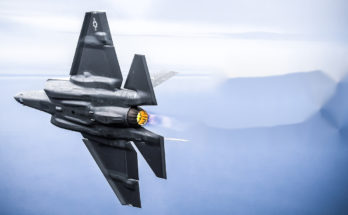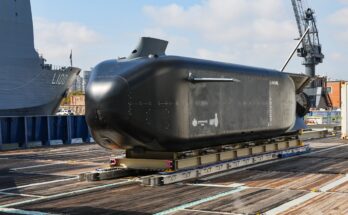by Dan Darling, International Military Markets Analyst, Forecast International.
The defense ministers of the three Baltic states – Estonia, Latvia and Lithuania – are publicly contemplating the procurement of an air defense system to be operated jointly. The three tiny countries currently rely upon NATO to conduct air policing over their skies, a practice that has been ongoing since their entry into the Alliance in 2004.
That entry was one of two primary goals shared by the three former Soviet satellites, with the other being admittance into the European Union (EU). Accomplishing both of these goals was seen by the three countries as a means of fixing their orientation permanently westward and offering up a shield to provide them with security from Russia.
But now, with Moscow’s takeover of the Crimean Peninsula and accusations that it is stoking pro-Russia ethnic separatist flames in Eastern Ukraine, there is growing concern that the threat of Russian interference in NATO member states is no longer as farfetched as believed in the past.
A particular area of concern for the Baltic states and those countries neighboring Russia, such as Finland and Sweden, is air defense. The approach Russia used in taking over Crimea from Ukraine in 2014, unconventional “hybrid warfare,” requires defenders to wield political, financial, cyber and public relations tools in addition to military ones. Nonetheless, conventional means remain both a deterrent and counter to any act of aggression from outside.
With a gap in both quantity and quality of armed personnel vis-à-vis Russia, the Baltics must rely upon a rotating NATO presence both in the air and, since the outbreak of conflict in Ukraine, on the ground. Further, the perception of a menacing Russia forces the three countries – with their limited defense budgets (a combined $1.2 billion in 2014) – to pool resources and concentrate on increasing “joint-ness,” or interoperability, among their forces. Coordination has been employed in the past, as evidenced by the formation of the Baltic Air Surveillance Network (BALTNET).
Now a sense of pressure to be seen by the rest of NATO as doing more for their own defense has descended on the three nations.
One such step would be the joint procurement of a medium-range air defense system, as mentioned by Lithuanian Defense Minister Juozas Olekas to the media on May 28. Such a system would logically complement the air-policing rotations conducted by NATO allies and form a ground- and air-based solution to air defense over the Baltics.
The two questions surrounding such an acquisition naturally involve platform type and funding.
The most likely solution would be Lockheed Martin’s Medium Extended Air Defense System (MEADS), which Germany appears ready to procure. Italy and even Poland also seem interested in acquiring MEADS, thus opening up an opportunity for a larger – albeit more complicated – pooled purchase by the NATO partners.
The MBDA-Thales partnership Eurosam offers up another alternative with its SAMP/T, adopted by the French Air Force.
In terms of financing, besides pooling their funding, the Baltics might rely on extraordinary funding provided by allies such as Germany or the United States (via its Foreign Military Financing avenue), or seek to tap into NATO’s limited Security Investment Program (NSIP) funds.
Whatever the decision, the new system will require careful, coordinated planning and further investment in training and logistics, thus making it an important – and expensive – foray for three countries unused to such military procurement undertakings.
For 50 years, Forecast International intelligence reports have been the aerospace and defense industry standard for accurate research, analysis, and projections. Our experienced analysts compile, evaluate, and present accurate data for decision makers. FI's market research reports offer concise analysis of individual programs and identify market opportunities. Each report includes a program overview, detailed statistics, recent developments and a competitive analysis, culminating in production forecasts spanning 10 or 15 years. Let our market intelligence reports be a key part of reducing uncertainties and mastering your specific market and its growth potential. Find out more at www.forecastinternational.com



